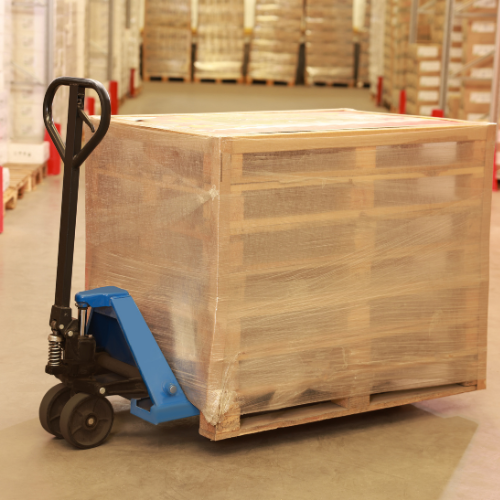When it comes to packaging, one of the most versatile and commonly used materials is stretch wrap. This thin, flexible plastic film is designed to protect goods during transport or storage by providing a secure and tight seal around them. But what makes stretch wrap so popular and how can you make the most out of this packaging material? In this guide, we will take you through the ins and outs of stretch wrap, from its selection to proper application techniques. Whether you are new to the packaging industry or looking to learn more about this essential material, this guide has got you covered.
The Importance of Stretch Wrap in Packaging

Stretch wrap is a staple in the world of packaging for several reasons. First and foremost, it provides excellent protection against moisture, dust, and dirt, keeping your goods clean and safe from external elements. Additionally, stretch wrap helps secure items together, preventing shifting or movement during transit. This not only ensures the safety of your products but also makes them easier to handle and stack. Moreover, stretch wrap is incredibly versatile and can be used on a wide range of items regardless of shape or size.
What is Stretch Wrap?
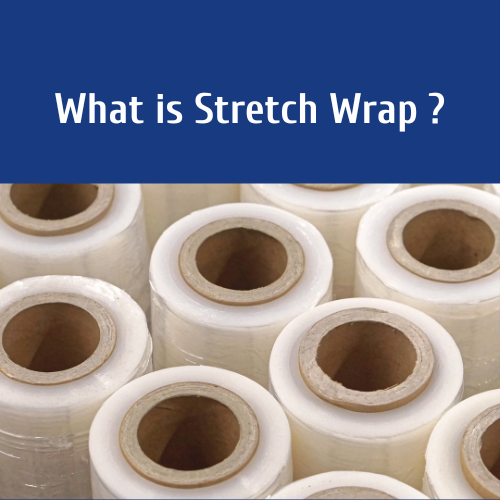
Stretch wrap, also known as stretch film or pallet wrap, is a thin plastic film made from linear low-density polyethylene (LLDPE). It can be stretched to over twice its original size without losing its elasticity, hence the name “stretch” wrap. Stretch wrap typically comes in rolls of varying widths and thicknesses and can be applied manually using a handheld dispenser or with automated stretch wrapping machines.
Different Types of Stretch Wrap
Stretch wrap can be categorized into two main types: hand (manual) stretch wrap and machine stretch wrap. As the name suggests, hand stretch wrap is applied manually using a dispenser, whereas machine stretch wrap is used with automatic wrapping equipment. Here are some other common types of stretch wraps available in the market:
Cast stretch wrap:

Made by feeding plastic pellets into a heated die, this type of stretch wrap has a glossy and clear appearance. It offers excellent puncture resistance, making it suitable for packaging sharp or pointed objects.
Blown stretch wrap:
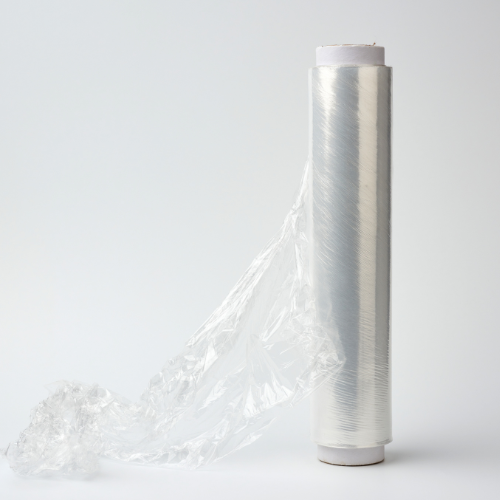
Blown stretch wrap is produced by melting plastic resin through an extruder and then blowing it through a circular die, creating a thicker and stronger film. Blown stretch wrap is ideal for heavy and irregularly shaped items.
UVI stretch wrap:
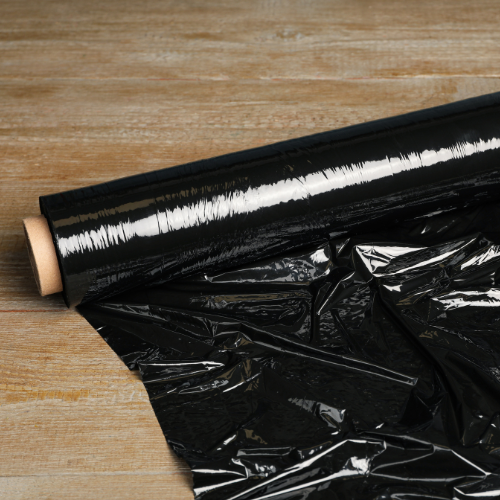
Designed to protect products during long-term storage or outdoor shipping, this type of stretch film contains added UV inhibitors that help prevent the film from breaking down due to exposure to sunlight.
Coreless Stretch Wrap –
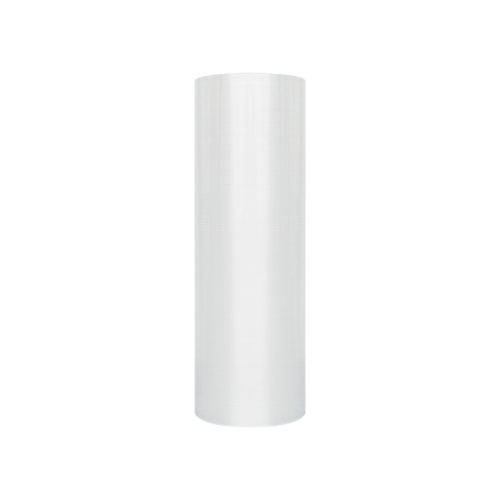
Coreless stretch wrap is manufactured without a cardboard core, making it more eco-friendly as there is no waste generated from the discarded cores.
Pre-Stretch Wrap
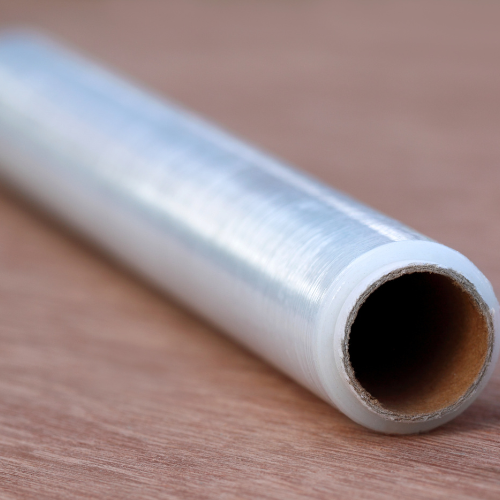
Pre stretch wrap that has been pre-stretched during the manufacturing process, making it lighter and easier to apply. It also offers reduced yield loss and a tighter load hold.
Silage Stretch Film

Used to wrap agricultural products such as hay, silage stretch film is designed to provide UV protection and withstand outdoor conditions. It also helps preserve the freshness and quality of the wrapped products.
VCI Stretch Film
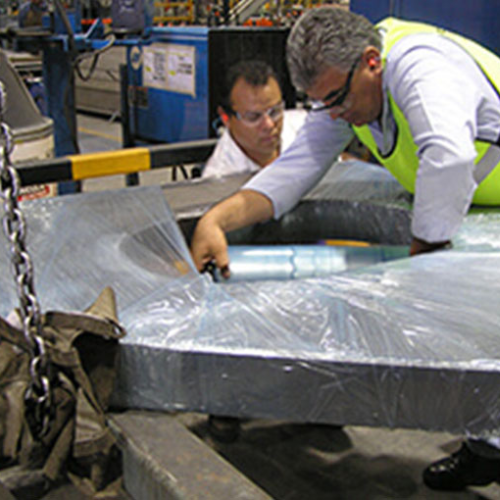
VCI stretch wrap contains volatile corrosion inhibitors (VCI) that protect metal objects from rust and corrosion during transport or storage.
Overall, stretch wrap plays a crucial role in the packaging industry by providing a cost-effective and efficient way to secure and protect goods during transit. With various types available, businesses can choose the most suitable stretch wrap for their specific needs and requirements.
Selecting the Right Stretch Wrap
When selecting the right stretch wrap for your business, there are a few important factors to consider. These include the type of goods being packaged, the transportation method used, and any specific environmental conditions that may affect the packaging.
For example, if you frequently transport goods outdoors or store them for long periods of time, choosing a UV resistant stretch wrap like UVI stretch wrap would be beneficial. On the other hand, if you need to protect metal objects from rust and corrosion, opting for VCI stretch film would be a better choice.
Comparison of Different Types of Stretch Wrap
To help you better understand the different types of stretch wrap available and their unique features, here is a quick comparison:
- Hand Stretch Film vs Machine Stretch Film: As the names suggest, hand stretch film is applied manually, while machine stretch film is used with a stretch wrapping machine. Manual stretch film is more suitable for smaller packaging operations, while machine stretch film offers faster and more efficient packaging for larger quantities.
- Cast Stretch Film vs Blown Stretch Film: These two types of stretch wrap are distinguished by the manufacturing process. Cast stretch film is produced through a cast extrusion process, resulting in a clear and smooth film. Blown stretch film is made by blowing hot air onto the plastic as it cools, creating a tougher and more puncture-resistant film.
- Pre-Stretched Stretch Film vs Standard Stretch Film: Pre-stretched stretch film has already been stretched during the manufacturing process and requires less force to apply compared to standard stretch film. This makes it a more cost-effective option for smaller packaging operations.
How to Apply Stretch Wrap?
Applying stretch wrap may seem like a simple task, but there are certain techniques that can ensure you get the best results. Here is a step-by-step guide on how to apply stretch wrap:
1. Prepare your packaging area: Before starting, make sure your goods are stacked securely and evenly on pallets or in boxes. Clear any obstacles from the area where you will be wrapping the goods to avoid any accidents or hindrances.
2. Choose the right equipment: Depending on the type and size of your packaging, decide whether you will use hand stretch film or a stretch wrapping machine. Make sure you have enough stretch wrap and any necessary tools such as a cutter or dispenser.
3. Start at the bottom: Begin by anchoring the end of the stretch wrap to the bottom of your pallet or packaging. This will prevent it from unraveling as you apply tension.
4. Wrap in a downward motion: Hold the roll of stretch film above your head and pull down as you walk around the goods. Keep the tension consistent to ensure a tight and secure wrap.
5. Overlap each layer: As you continue wrapping, make sure each layer overlaps the previous one by about 50%. This will create a stronger hold and prevent any gaps in the wrap.
6. Pay attention to corners: When reaching corners or edges, use extra tension and ensure that the wrap is tightly secured around them. This will prevent any loose parts from shifting during transportation.
7. Secure the top: Once you have reached the top of your packaging, secure the end of the stretch wrap to the top or sides with tape or tuck it under a few layers for added security.
8. Inspect and reinforce: After completing the wrapping process, inspect your goods for any loose areas or gaps in the wrap. If necessary, reinforce these areas with additional layers of stretch wrap.
9. Label and store: Finally, label your goods with any necessary information and store them in a safe and secure location until they are ready for transportation
Common mistakes to avoid when applying stretch wrap:
- Not using enough tension: This can result in the wrap being too loose and not providing sufficient protection during transport.
- Using too much stretch film: Using excessive amounts of stretch wrap can lead to unnecessary waste and additional costs.
- Not overlapping layers: Skipping over the step of overlapping layers can result in weak spots in the wrap, making it prone to tearing or shifting during transport.
- Ignoring corners and edges: Neglecting to secure corners and edges can also result in loose areas that can cause damage to goods during transportation.
- Not properly anchoring the wrap: Failing to secure the end of the stretch wrap can result in unraveling and shifting during transport.
- Not inspecting and reinforcing: Skipping the step of inspecting and reinforcing any loose areas can lead to damaged goods during transportation.
By following these guidelines and avoiding common mistakes, you can ensure that your stretch wrapping process is effective and provides adequate protection for your goods during transport.
Advanced Application Techniques
While the basic stretch wrapping process may work for most goods, there are certain items that require special handling and techniques. Here are some tips for efficiently using stretch wrap on specific items:
When wrapping pallets, it is important to start at the bottom and work your way up. This ensures that all layers of the wrap are secure and prevents any shifting during transport. Additionally, it is recommended to wrap the pallet at an angle, as this provides better stability and support.
Boxes
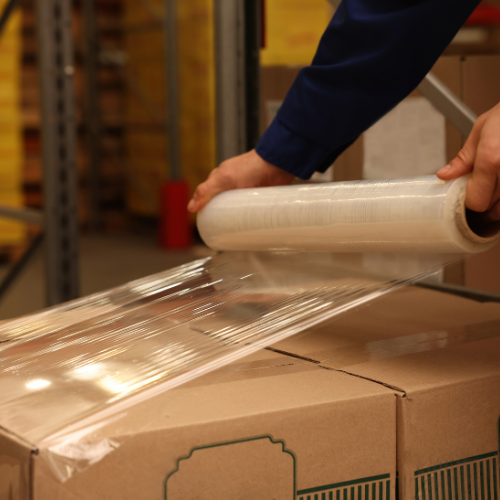 For boxes, it is important to ensure that all sides are properly covered with stretch wrap. You can achieve this by overlapping layers on all sides and corners. It is also helpful to reinforce any loose areas by applying additional layers of wrap.
For boxes, it is important to ensure that all sides are properly covered with stretch wrap. You can achieve this by overlapping layers on all sides and corners. It is also helpful to reinforce any loose areas by applying additional layers of wrap.
Odd-shaped items:
 When dealing with odd-shaped or irregularly shaped items, it is important to pay attention to the corners and edges. These areas are more vulnerable to shifting during transport, so make sure they are properly secured with multiple layers of wrap.
When dealing with odd-shaped or irregularly shaped items, it is important to pay attention to the corners and edges. These areas are more vulnerable to shifting during transport, so make sure they are properly secured with multiple layers of wrap.
Fragile items:
 For fragile items, it is recommended to use a thicker gauge stretch wrap for added protection. You can also consider using additional cushioning materials such as bubble wrap or foam to protect the items from any potential damage.
For fragile items, it is recommended to use a thicker gauge stretch wrap for added protection. You can also consider using additional cushioning materials such as bubble wrap or foam to protect the items from any potential damage.
Long and narrow items:
 When wrapping long and narrow items, it is important to start at one end and work your way down to the other end. This ensures that the entire item is securely wrapped and prevents any weak spots in the middle.
When wrapping long and narrow items, it is important to start at one end and work your way down to the other end. This ensures that the entire item is securely wrapped and prevents any weak spots in the middle.
Frequently Asked Questions about Stretch Wrap
Q: How much stretch wrap should I use per item?
A: The amount of stretch wrap needed for each item varies depending on its size and shape. As a general rule, it is recommended to have at least two layers of wrap covering the entire item for adequate protection.
Q: Can I reuse stretch wrap?
A: While some types of stretch wrap can be reused, it is not recommended. Reusing stretch wrap can compromise its strength and effectiveness in providing proper support and protection for your items.
Q: Can I use stretch wrap for outdoor storage?
A: It depends on the type of stretch wrap you are using. Some types of stretch wrap are specifically designed for outdoor use and can withstand exposure to sunlight and other harsh elements. It is important to check the label or consult with a professional before using stretch wrap for outdoor storage.
Q: Is there a specific direction in which stretch wrap should be applied?
A: Yes, it is best to apply stretch wrap in alternating directions – one layer going vertically and the next layer going horizontally. This creates a stronger hold and prevents weak spots or gaps in the wrap.
Q: Can I use stretch wrap for temperature-sensitive items?
A: Stretch wrap can be used for temperature-sensitive items, but it is important to choose a type of stretch wrap that is suitable for the specific temperature range. Some stretch wraps are designed to withstand extreme temperatures, while others may melt or become brittle in certain conditions. It is best to consult with a professional and choose the appropriate stretch wrap for your needs.
Conclusion
In conclusion, stretch wrap is a versatile and effective packaging material that can provide protection for a wide range of items. By understanding the different types of stretch wrap available and how to properly use them, you can ensure that your items are securely packaged and ready for storage or transportation. We encourage readers to try using stretch wrap in their own packaging processes and see the benefits firsthand.


